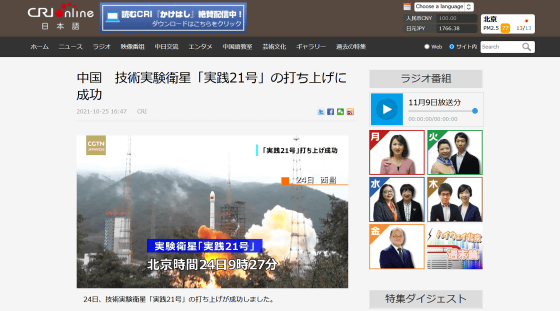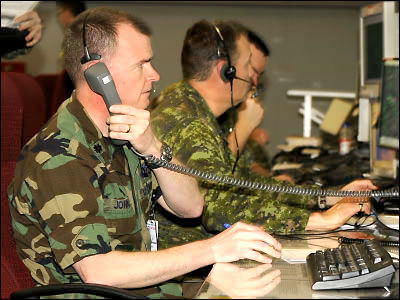US Space Force detects 'mysterious object orbiting with Chinese artificial satellite'

As space development progresses, the problem of
An object is now orbiting alongside China's Shijian-21 debris mitigation satellite --SpaceNews
https://spacenews.com/an-object-is-now-orbiting-alongside-chinas-shijian-21-debris-mitigation-satellite/
Mystery Object Detected Near Chinese Satellite
https://futurism.com/mystery-object-detected-near-chinese-satellite
Space Force Detects Mystery Object in Orbit Alongside Chinese Satellite
https://gizmodo.com/space-force-detects-mystery-object-in-orbit-alongside-c-1848016044
On October 24, 2021, China mounted the experimental satellite 'Practice No. 21' on the satellite launch rocket Long March 3B and launched it from the Xichang Satellite Launch Center. Practice No. 21, developed by the Shanghai Academy of Spaceflight Technology, is expected to be used for 'verification of space debris removal technology', but no further information has been revealed.
Succeeded in launching China Technology Experiment Satellite 'Practice No. 21' _ China Radio International
http://japanese.cri.cn/20211025/ec3fd1af-e5af-2859-51fd-d71cabd4f954.html

And on November 1, the 18th Space Control Squadron of the U.S. Space Force discovered a mysterious object floating in orbit along with Practice No. 21 and registered it with the International Designator '2021-094C'. .. The U.S. Space Force has identified the 2021-094C as an apogee kick motor used to bring satellites from geostationary transfer orbit into geostationary orbit .
Generally, the apogee kick motor discharged from the satellite after use is discharged to the graveyard orbit, which is higher than the geosynchronous orbit, but this time 2021-094C orbits in the same geosynchronous orbit as the satellite body. Jonathan McDowell of the Harvard Smithsonian Astrophysical Center told GIZMODO, a technology media, that there is a risk of colliding with other satellites if the apogee kick motor is discharged into geosynchronous orbit. It's a bad idea (to dump into geosynchronous orbit) and it's very rare. '
However, the above speculation is based on the assumption that the 2021-094C is an apogee kick motor. Space News, a space-related media, is uncertain whether the 2021-094C is actually an apogee kick motor, and it is possible that it is an object related to 'Space debris removal technology' in Practice No. 21, and proximity operation outside the satellite. It seems that it may be an object used for refueling experiments.
Similarly, McDowell said, 'I don't know why the U.S. Space Force considered the second object (2021-094C) to be an apogee kick motor. Is this just a (wrong) guess, a sensor that leads to a conclusion? Did you classify the data? ' He also said that objects that are generally separated from the satellite will gradually move away from the satellite, but Practice 21 and 2021-094C are floating 60 km away from each other, so a pair of working together. Pointed out that it is a payload. He said he might be monitoring radio signals from other satellites and would need to keep checking for months to see if he would do anything.
According to Space News, China also launched an unidentified payload with Tongxin Jishu Shiyan-3 (Communication Technology Test Satellite No. 3) in 2018, when the main body and the mysterious payload will follow other countries' tracking networks. It was said that there were some disturbing movements. McDowell pointed out that Practice No. 21 and Communication Technology Test Satellite No. 3 may be related in some way.

by Craig Nagy
Related Posts:
in Note, Posted by log1h_ik







